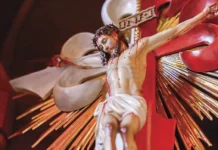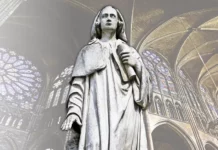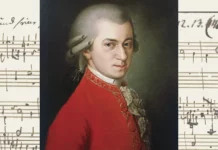After being persecuted and trod underfoot, the Church emerged from the Catacombs in a state of perfect and definitive organization. How was this possible?
Few have never heard of the catacombs of Rome, and countless have personally visited them. Toured by thousands daily, these underground galleries wield a mysterious attraction, and leave pilgrims with a deep and lasting impression.
In the shadows of these labyrinths, some excavated at a depth of over 20 metres, the attentive visitor will observe, at every turn, open rectangular cavities along the walls, sometimes bearing inscriptions, names, or depictions above them. These are the graves of Christians—many of them martyrs—, giving eloquent testimony of a heroic past, sealed with the blood of those who have gone before us in the Faith.
At certain points, the corridors open onto narrow rooms embellished with rudimentary frescos, at the centre of which stands an altar. An atmosphere of piety and recollection reigns, broken only by the voice of the guide, announcing, “This room served as a chapel, and on this altar, the Popes celebrated Mass!”

Safe refuge for celebrating the sacred mysteries
We can easily imagine the flitting shadows of those fervent Christians moving stealthily at nightfall, through the entranceway of the catacomb, which consisted of a hole in the ground. While on the surface of the capital of the Caesars, the corrupt Roman society wallowed in libertine pleasures, under the very feet of the tyrants, small communities gathered to hear the Word of God and to participate in the Eucharistic liturgy.
Typically, residences of the converted nobility served as meeting places for the early Christians, but when the persecution became more violent and the imperial police more relentless, they were forced to seek safe refuge for carrying out their sacred ceremonies. This they found in the catacombs.
These shelters were granted to the Church by the generosity of the wealthier faithful, owners of vast necropolises of the gen to which they belonged. These sites were made available for the celebration of the sacred mysteries, and to afford a fitting burial for the bodies of those fallen under the blows of pagan cruelty.
In the first century, Flavia Domitilla opened a mortuary chamber known as the Hypogeum of Flavium, to the members of her family who had embraced the Faith, later donating extensive burial galleries to her ex-slaves who had become her brethren in the order of grace. In the same century, Lady Commodilla offered one of her properties, situated on the Via Ostiensis, to receive the remains of the martyrs, among which the body of the Apostle Paul reposed for a long period. Later, in the second century, Praetextatus, from the line of the Cecilios, bestowed a tract of land—the site of an ancient burial ground—, to serve as a Christian cemetery.
A new reality with charismatic power
In the Eternal City, the nucleus of the faithful was a minority which, nevertheless, grew steadily with the passing years. Invincible Rome, whose despotic power had subjugated all peoples within its reach, saw a new reality rise up in its very midst—one endowed with charismatic power, attracting people of every class, age and condition: innocent children, fragile virgins, lowly slaves, noble matrons, valiant soldiers, eminent magistrates and intellectuals… All of them, moved by the same faith, fearlessly confronted the prevailing paganism and defied idolatry at the feet of its loathsome altars.
Obliged to live in a society rife with injustice and immorality, they faced the hardship of being the objects of contempt, derision and calumny, even by friends and family—when they were not formally denounced to the authorities, and consequently martyred. Many professions, enumerated by St. Hippolytus1 in one of his works, were deemed incompatible with the principles assumed in Baptism: sculptor, painter, actor, professor, gladiator, and idol curator, among others. To shun one of these occupations was equivalent to placing oneself under suspicion.
Frequently, the dangers penetrated even the intimacy of the home. For example, a family member who showed signs of adhesion to Christianity would be deserted or even betrayed by their relatives. Thus, even in life’s most ordinary circumstances, the fidelity demanded of Christians was arduous.
Men of profound virtue and wisdom
Although persecuted in every way by the enemies of the Faith, and often forced to hide in the darkness of the catacombs, the early Church flourished and produced splendid fruits in the realm of customs, institutions, and art. This point, perhaps insufficiently stressed by scholars and historians, seems, however, to deserve no less attention than the heroic deeds of the martyrs.
Inspired by the Holy Spirit, the worthy pastors of the Church of Rome—already considered the mother of all the churches—strengthened the ecclesial discipline and collaborated effectively to enrich the liturgy. They were men of profound virtue and wisdom as well as firm hand, possessed of the necessary calm—in the midst of the storm blowing from without—to lay the groundwork of the beautiful spiritual edifice founded by Jesus Christ at the height of the Cross.
In early anticipation of future parishes, St. Evaristus (c. 96-c. 105), the fourth successor of St. Peter, organized the city’s communities into over twenty domestic churches, appointing priests to their sacramental ministry. Furthermore, he assigned seven deacons to the task of assisting the Bishop in the conservation of sound doctrine during preaching, laying the groundwork for what later became the College of Cardinals.2
St. Alexander (c. 105-c. 115) introduced mention of Christ’s Passion in the Mass, with the words “Qui pridie quam pateretur” spoken before the Consecration. To him is also due the custom of sprinkling Christian residences with holy water. 3 An exhortation attributed to him reads: “We bless water mixed with salt, so that, by aspersion with this water, all may be sanctified and purified; and we command the same to be done by all priests. […] Indeed, if contact with the garments of the Saviour was enough to cure sicknesses, as cannot be doubted, what greater power cannot be drawn by the elements from His very words, for the healing of poor humanity in body and soul.”4
St. Sixtus (c. 115- c. 128), his successor, established certain canonical regulations, such as the requirement that sacred vessels could only be touched by clerics. He is also credited with the institution of the singing of the Sanctus at the beginning of the canon of the Mass.5
St. Telesphorus (c. 128-c. 136), the next to occupy the Pontifical throne, allied his vast culture with a deep and tender piety. The Liber Pontificalis narrates that, before ascending to the Papacy, he was an anchorite in Greece or in Palestine. His special devotion to the mystery of the Incarnation led him to establish the celebration of Mass on Christmas Eve, and he prescribed that the hymn Gloria in excelsis Deo be sung on that occasion. He also conferred liturgical character on the custom inherited from the Apostles of Lenten fasting and abstinence.6
St. Hyginus (136-140) employed the four years of his short pontificate in restoring some points of discipline that had fallen into laxness or disuse. He reorganized the functions of the Ecclesiastical Hierarchy, instituted the minor orders, and established the order of precedence among the members of the clergy.7
St. Pius I (141-154) undertook to combat negligence in the celebration of the Holy Sacrifice, decreeing “rigorous penalties for priests that treat the adorable Body or the Precious Blood of Jesus Christ with any type of negligence.” 8 His apostolic zeal led him to write several letters of exhortation to the faithful, two of which are still preserved. It was he, finally, who fixed the day on which Easter should be celebrated: the first Sunday after the full moon of March.
Like their predecessors, St. Anicetus (154-166) and St. Soter (166-174) strove to build up the Church, both by correcting points of liturgy or customs, and by their humility, meekness, and charity. Regarding St. Soter, a eulogy which Dionysius, then Bishop of Corinth, dedicated to him in a letter to the faithful of Rome deserves special mention: “From the beginning, you have been wont, in manifold ways, do good to all the brothers and to send provisions to many churches; […] a custom that your blessed Bishop Soter not only maintained, but even increased, providing abundant aid to send to the saints, and moreover, as a father who bears a tender love for his own, comforting the brothers who come to him with unerring words.” 9

Perfect and definitive organization
In light of these facts, Professor Plinio Corrêa de Oliveira comments that, when the Emperor Constantine proclaimed the Edict of Milan in 313, putting an end to the persecution of Christians, “the persecuted church, trampled, trodden underfoot, shedding blood from every pore, emerges from the catacombs and begins to live in freedom with an already perfect and definitive organization: it has a hierarchy, its own law, a complete structure, a defined liturgy, and a deposit of established doctrine.” 10
The Catholic Church thus asserts itself as the first universal entity in existence up to its time, for all religions and all organizations had formerly been circumscribed to the confines of the state.
Shepherds and watchmen of the House of God
However, beyond the violent persecution perpetrated by the emperors, these wise shepherds faced yet another enemy, perhaps even more menacing to their flocks, due to its having have arisen within the Church itself: heresy. As early as the apostolic period, this terrible adversary began to perfidiously infiltrate false doctrines or ideological deviations, such as those of gnosis and Nicolaitanism, fought notably by St. John the Evangelist (cf. I Jn 2:18-20; 4:1-6; Rv 2: 6,15).
The real father of heretics was Simon Magus, who coupled the most extravagant doctrines with the Gnostic theories, winning over, by his sorcery, many followers who called themselves the Simonians, inciting them to worship him as a demigod. This pioneer of Gnosticism met his principal contender in St. Peter the Apostle, as the Acts of the Apostles relate (cf. Acts 8:9-13, 18-24).
Subsequently, Cerinthus rose up and began to spread a dualistic ideology among the faithful, inspired in Greek philosophy, according to which Jesus, true man, had been joined, at the moment of Baptism, to the mediator between God and the world—Christ—who later abandoned Him at the time of the Passion. Shortly thereafter, in Syria, Saturninus and Cerdo took Gnostic theories even further, claiming that Christ was a divine aeon come to redeem men, instructing them in the true knowledge and in abstinence from both marriage and the begetting of children.

Even more dangerous were the Gnostics from Alexandria: Basilides and Valentinus. Both, in somewhat different modes, were based on pantheism, and on the existence of a principle of good and evil. They defended the theory that Jesus was a spirit who had come in visible form to restore order to the world of the aeons and to free them from the power of evil. While the Basilidians performed magic sessions and wore amulets, the Valentinians identified themselves as spiritual men who had no need of redemption, and who were consequently exempted from morality in their conduct.
Still other groups of lesser import preached similar doctrines and perpetrated true moral scandals under the pretext of enjoying the freedom of the perfect. These were the Ophites, the Naassenes, the Sethites, the Perates, the Cainites and the disciples of Carpocrates.
Later, a Christian named Marcion, originating from the regions of Pontus came to Rome with a “reforming” doctrine. He felt that the Church had turned away from the true spirit of Christ and created his own church, with bishops and priests, revolting against the legitimate hierarchy. His ideology was centred on the opposition between the righteous God of the Old Testament, and Christ, the God of love, of the New Testament, Who had come to teach men the true doctrine, but was crucified by order of the wrathful God.
Another foe that would wreak great damage and cause many divisions among the faithful emerged unexpectedly in the person of a neophyte, Montanus. This man preached an exaggerated rigorism by which he obliged his followers to abstain from marriage, to observe austere fasting, and to not only ardently desire martyrdom, but in fact to willingly expose themselves to it. He moreover declared there to be no forgiveness for certain more serious sins, such as apostasy, adultery, and murder.
The Bishops of Rome, as true watchmen of the House of God, effectively countered these many heresiarchs who represented a threat to orthodoxy and to the unity of the vernal Church of the first and second centuries. They energetically rebutted these endless doctrinal aberrations, expelling the recalcitrants from the community.
Cerinthus, for example, was banished from the Church by the Apostles themselves; St. Hyginus excommunicated Cerdo, who supposedly abjured his errors, but continued to diffuse them in secret; and St. Anicetus condemned Montanus.
“The first step was to exclude the Gnostic leaders from the community of the faithful, along with their principal followers. […] The second had a positive character: radical precautions were set in place through solid and thorough instruction. […] The third means consisted in drawing up the definitive list of books inspired by God, which came to be called the canon of Sacred Scripture.”11

“I have overcome the world!”
The testimony of these men who—even at the risk of falling at any moment into the hands of the executioners or the claws of the beasts—continued to build up the Church’s doctrine and organize its internal life, demonstrated, beyond the human dimension, the strong and vigorous action of the Holy Spirit. This force in the nascent Church, which could be described as almost overwhelming, blowing in the souls of the faithful and especially of their guides, instilled an unshakable confidence in the ultimate triumph.
That same Comforter Who inspired St. Paul to exclaim: “But thanks be to God, Who in Christ always leads us in triumph” (2 Cor 2:14), and directed the pen of the Beloved Disciple to write: “This is the victory that overcomes the world, our faith” (1 Jn 5:4), led the early Christians to pass fearlessly through every tribulation and storm that assailed them. For they knew that they were members of a Mystical Body, whose Head, only a short while ago crowned with thorns, had declared before the public authority: “You say that I am King!” (Jn 18:37).
For them—and for us today, two thousand years later, as well as for all those who will yet come to believe in Jesus through the word of His disciples—the message was clear, powerful, and irrevocable, “In the world you shall have distress: but have confidence, I have overcome the world” (Jn 16:33). ◊







